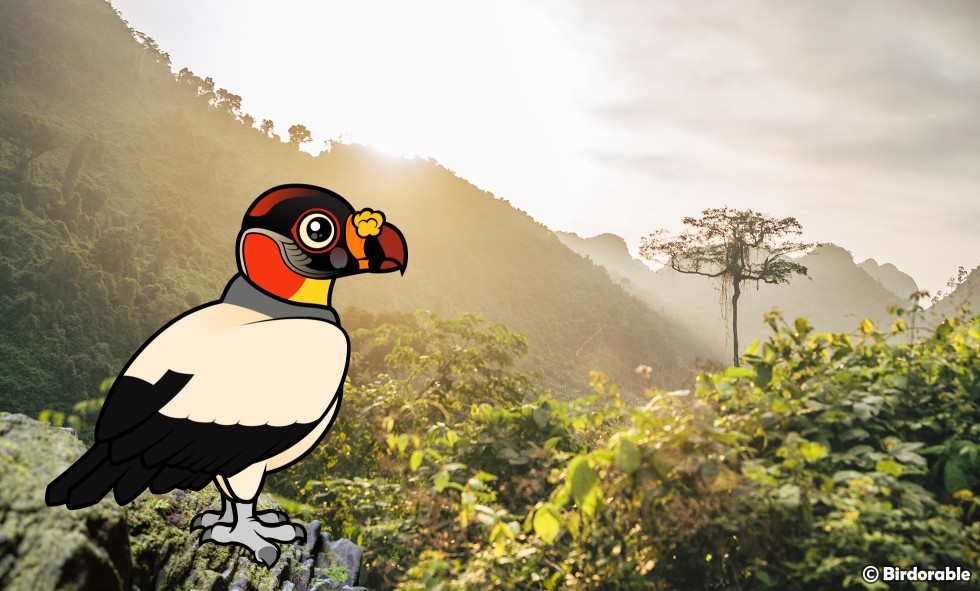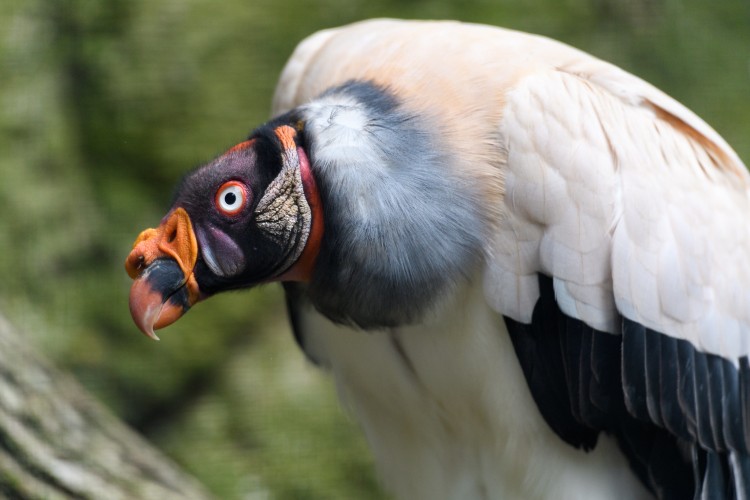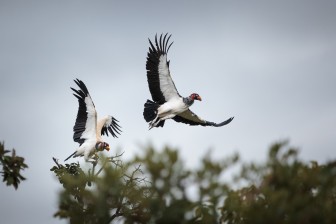Vulture Week 2024
Meet the King Vulture: A Colorful Scavenger of the Americas

The King Vulture is a striking bird with vibrant colors and a powerful presence, found throughout Central and South America. It’s one of the largest vultures in the New World, and it certainly lives up to its royal name with its impressive size and striking appearance. King Vultures play a key role in their ecosystems as scavengers, helping to keep the environment clean by feeding on the remains of dead animals.
The King Vulture is a visually stunning bird. Its body is mostly white, with black-tipped wings and tail feathers, but the most eye-catching part of this bird is its head. The King Vulture’s bare head and neck are covered in a mix of bright orange, yellow, and bluish skin. Its beak is also brightly colored, with a distinct fleshy crest, called a caruncle, on top that adds to its unique look.

King Vulture by Eric Kilby (CC BY-SA 2.0)
These vultures are quite large, with wingspans reaching up to 6.6 feet, and they can weigh between 6 to 10 pounds. Despite their size, King Vultures are highly efficient gliders, able to soar for long periods while searching for food. Their impressive ability to fly without flapping their wings helps them conserve energy as they cover large distances looking for carcasses to feed on.
King Vultures are usually found in tropical lowland forests, where they play an important role as nature's cleanup crew. They primarily feed on carrion, and like other vultures, they rely on their excellent sense of smell and sharp eyesight to locate food. Although they often arrive late to a carcass, after other vultures like Turkey Vultures have found it, they use their powerful beaks to tear open tough hides, which smaller vultures can’t penetrate as easily. This teamwork benefits many scavengers in the area.

King Vultures by Bart van Dorp (CC BY 2.0)
King Vultures are generally solitary or found in small groups. They don’t have the same social behavior seen in other vulture species, and they are more likely to dominate feeding sites thanks to their size and strength. While they aren’t picky about what kind of animal remains they eat, King Vultures prefer freshly dead animals, and they are often seen feeding alongside other scavengers like mammals and insects.
King Vultures tend to nest in hollow trees, laying just one egg at a time. Both parents share the responsibility of incubating the egg for about 55 days. Once the chick hatches, both the female and male take turns feeding it by regurgitating food. The chick grows rapidly and leaves the nest around 3 months old, but it will still rely on its parents for food for a while longer.
While King Vultures are not currently considered endangered, their populations are declining in certain areas due to habitat loss and deforestation. As forests are cleared for agriculture or development, the vultures lose their nesting sites and hunting grounds. Like other scavenger species, they are also vulnerable to poisoning from chemicals used in agriculture or from consuming carcasses tainted by such human activity.
The King Vulture joined Birdorable on August 23, 2012.





Comments
Leave a comment
Thank you!